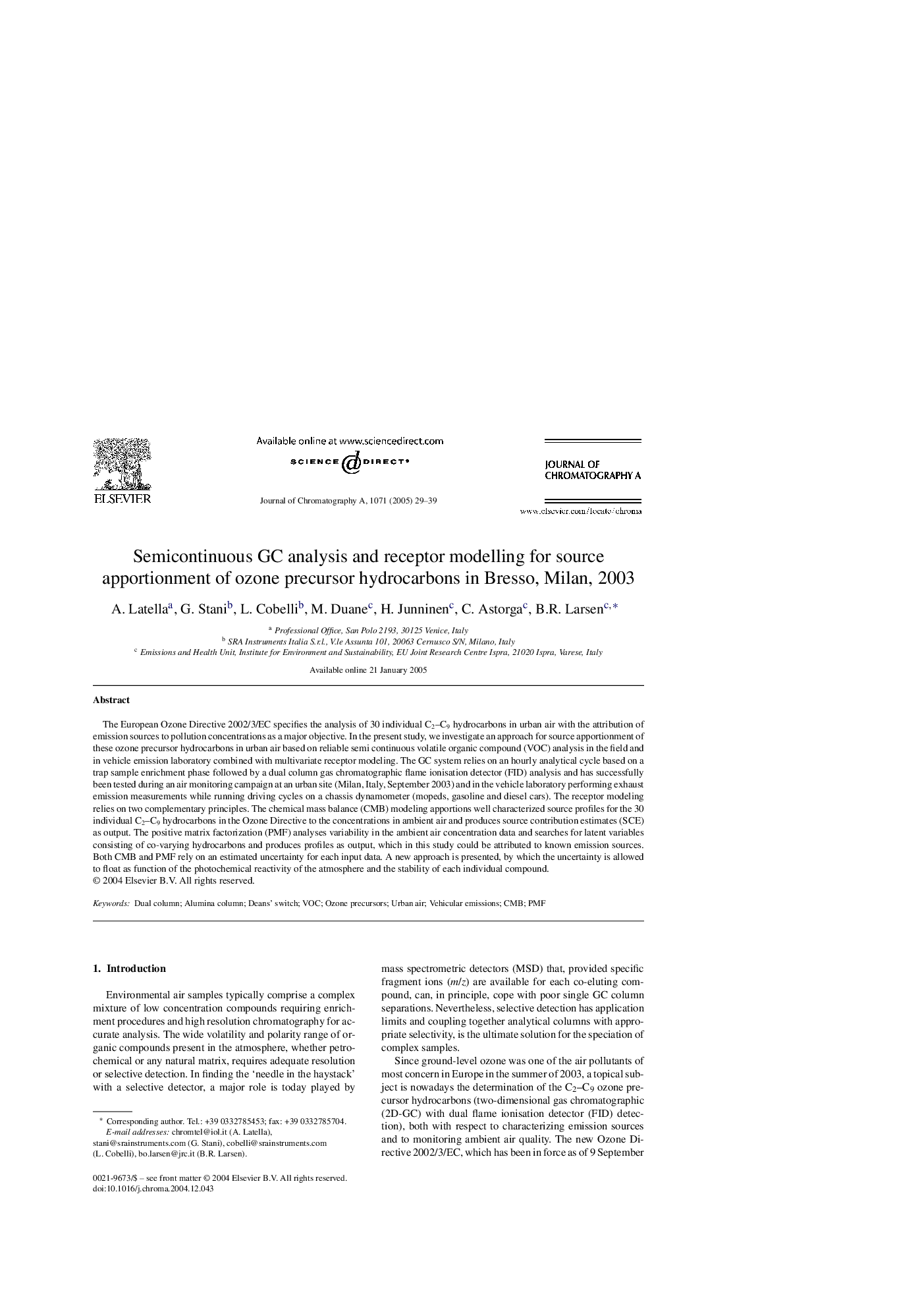| Article ID | Journal | Published Year | Pages | File Type |
|---|---|---|---|---|
| 9749174 | Journal of Chromatography A | 2005 | 11 Pages |
Abstract
The European Ozone Directive 2002/3/EC specifies the analysis of 30 individual C2-C9 hydrocarbons in urban air with the attribution of emission sources to pollution concentrations as a major objective. In the present study, we investigate an approach for source apportionment of these ozone precursor hydrocarbons in urban air based on reliable semi continuous volatile organic compound (VOC) analysis in the field and in vehicle emission laboratory combined with multivariate receptor modeling. The GC system relies on an hourly analytical cycle based on a trap sample enrichment phase followed by a dual column gas chromatographic flame ionisation detector (FID) analysis and has successfully been tested during an air monitoring campaign at an urban site (Milan, Italy, September 2003) and in the vehicle laboratory performing exhaust emission measurements while running driving cycles on a chassis dynamometer (mopeds, gasoline and diesel cars). The receptor modeling relies on two complementary principles. The chemical mass balance (CMB) modeling apportions well characterized source profiles for the 30 individual C2-C9 hydrocarbons in the Ozone Directive to the concentrations in ambient air and produces source contribution estimates (SCE) as output. The positive matrix factorization (PMF) analyses variability in the ambient air concentration data and searches for latent variables consisting of co-varying hydrocarbons and produces profiles as output, which in this study could be attributed to known emission sources. Both CMB and PMF rely on an estimated uncertainty for each input data. A new approach is presented, by which the uncertainty is allowed to float as function of the photochemical reactivity of the atmosphere and the stability of each individual compound.
Related Topics
Physical Sciences and Engineering
Chemistry
Analytical Chemistry
Authors
A. Latella, G. Stani, L. Cobelli, M. Duane, H. Junninen, C. Astorga, B.R. Larsen,
